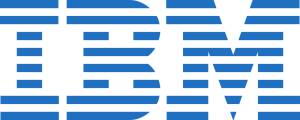Why Liquid Cooling Is Becoming the Data Center Standard
Cooling at a Crossroads: Why Change Was InevitableThe global data center industry stands at a transformative juncture. For decades, the core challenge for operators was efficiently removing the heat generated by servers, networking equipment, and storage arrays. The tools of the trade — CRAC units, chillers, raised floors, and hot aisle/cold aisle containment — were designed for workloads consuming modest amounts of power, often below 10 kW per rack.But in the age of AI, cloud-native applications, and generative workloads, the demands placed on data center cooling systems have skyrocketed. Compute-intensive AI models like OpenAI’s GPT-4o and Meta’s LLaMA 3 require clusters of thousands of GPUs, each drawing between 500W and 700W. Racks running 30-100 kW workloads are now common in both hyperscale and enterprise deployments.The result? Air cooling can no longer keep up. The thermal transfer properties of air pale in comparison to liquids. The energy and space requirements of air cooling systems now consume an unsustainable portion of data center budgets and floorplans. Liquid cooling solves both problems, offering higher thermal transfer efficiency and enabling denser compute configurations.This shift mirrors past technological leaps: just as the steam engine gave way to electricity, and copper cables gave way to fiber optics, air cooling is ceding its place to liquid cooling.The Technology Behind Liquid CoolingDirect-to-Chip CoolingDirect-to-chip (D2C) cooling is rapidly becoming the most common form of liquid cooling deployed in production environments. Cold plates are mounted directly onto CPUs, GPUs, memory modules, and sometimes voltage regulators. A closed-loop system circulates coolant through these plates, removing heat at the source.Coolants vary from water-glycol mixtures to sophisticated dielectric fluids that prevent corrosion and leakage issues. Modern D2C solutions are engineered for reliability, with:Automated leak detection systems that shut down coolant loops in millisecondsQuick-disconnect couplings for hot-swappable maintenanceModular manifold designs for rapid deploymentBy removing 70%-80% of heat loads directly at the chip, D2C reduces the burden on facility-level cooling infrastructure.Immersion CoolingImmersion cooling takes the liquid cooling concept further by submerging entire servers in a bath of dielectric fluid. Two main types exist:Single-phase immersion: The coolant absorbs heat and is circulated through heat exchangers.Two-phase immersion: The coolant vaporizes upon absorbing heat and re-condenses, transferring heat away with high efficiency.Immersion systems have proven especially effective in high-density crypto mining, AI model training, and HPC clusters where rack densities exceed 80-100 kW. Companies like Submer, GRC, and Asperitas have deployed production-scale immersion solutions with measurable power savings and reliability improvements.Why Liquid Cooling Is Gaining Momentum in 2025Unprecedented Power DensityAccording to the Uptime Institute, the average data center rack power density increased by 38% from 2022 to 2024, with the steepest growth in AI and hyperscale deployments. Power densities that once maxed out at 15 kW are now pushing 80 kW to 120 kW in AI clusters.Efficiency Sustainability DriversLiquid cooling systems reduce the need for large chillers and CRAC units, cutting energy consumption dramatically. PUE scores for liquid-cooled data centers are consistently below 1.2, compared to 1.4 - 1.6 for air-cooled facilities.Moreover, many hyperscalers have committed to eliminating water-based cooling towers in drought-prone regions. Liquid cooling enables this shift, conserving millions of gallons of water per year.Economics of ScaleWhile liquid cooling carries higher upfront capital costs, the operational savings and ability to densify workloads deliver ROI within 2-4 years in most deployments. This economic equation is driving both new builds and retrofits in North America, Europe, and Asia.Design FlexibilityLiquid cooling allows operators to deploy smaller, denser data halls. Without the need for massive air plenums and ducting, real estate utilization improves dramatically—a key advantage in high-cost markets like Singapore and Silicon Valley.Industry Leaders and Early AdoptersHyperscale Cloud ProvidersMicrosoft’s Azure AI clusters, Google’s TPU deployments, and Meta’s LLaMA model training nodes have all shifted to liquid cooling. Microsoft’s advanced AI supercomputer, unveiled in 2025, features exclusively liquid-cooled racks to support its GPT-Next training workloads.Colocation ProvidersDigital Realty’s Paris and Singapore campuses now feature liquid-ready suites targeting AI/ML workloads. Equinix’s xScale facilities in Tokyo and Frankfurt are designed for rapid liquid cooling adoption.Hardware OEMsDell, Lenovo, and HPE now offer liquid-cooled server SKUs as standard options. NVIDIA and AMD design their flagship GPUs with liquid cooling as the preferred thermal management solution.Challenges to Adoption—And How They’re Being OvercomeOperational ComplexityInitially perceived as difficult to maintain, modern liquid cooling systems come with:Automated monitoring and telemetrySimplified service models for coolant refills and maintenanceFailover mechanisms for pump redundancyRetrofit LimitationsRetrofit opportunities in legacy data centers are limited due to space and infrastructure constraints. However, modular containerized solutions are bridging this gap, offering liquid-cooled compute capacity as standalone pods.Industry EducationOne of the final barriers is cultural. Facility operators trained on air systems must learn new service protocols. Vendors are addressing this with certification programs and hands-on training courses for liquid cooling management.Liquid Cooling’s Role in Future Data Center EcosystemsLiquid cooling is not only a solution for today’s AI workloads; it lays the foundation for next-gen applications like:Quantum computing, which requires ultra-stable thermal environmentsEdge computing nodes in harsh environments, where sealed liquid cooling systems outperform air-cooled alternativesDecarbonized data centers, where waste heat is captured and reused in district heating gridsEnvironmental and Policy ConsiderationsRegulatory Push for SustainabilityRegions like the EU, California, and Singapore are implementing stricter regulations around data center energy and water consumption. Liquid cooling enables compliance with these emerging standards.Heat Reuse and the Circular EconomyLiquid cooling simplifies heat capture for reuse in:District heating systemsIndustrial processesGreenhouse and aquaponic farming initiativesIn Scandinavia, data center heat reuse has already become a policy requirement in urban zones.Market Outlook: Liquid Cooling by the NumbersAnalysts predict:The liquid cooling market will grow from $1.5 billion in 2024 to $6.2 billion by 2030.By 2027, over 50% of new hyperscale capacity will be liquid cooled.AI workloads alone will drive an additional 15 GW of liquid-cooled data center capacity globally by 2028.The Future of Data Center CoolingLiquid cooling is no longer a niche technology. It is the industry standard for hyperscale workloads, AI training clusters, and sustainable data center builds. Operators who fail to adopt liquid cooling will be unable to support future compute densities or meet sustainability targets.The next phase of the data center revolution will be powered not just by faster chips and smarter software, but by colder, denser, more efficient hardware environments—all made possible by liquid cooling.
























